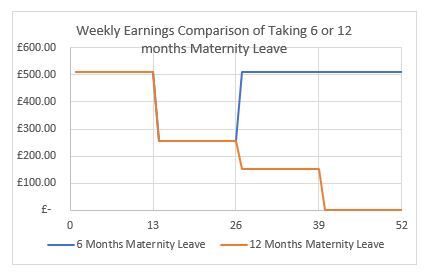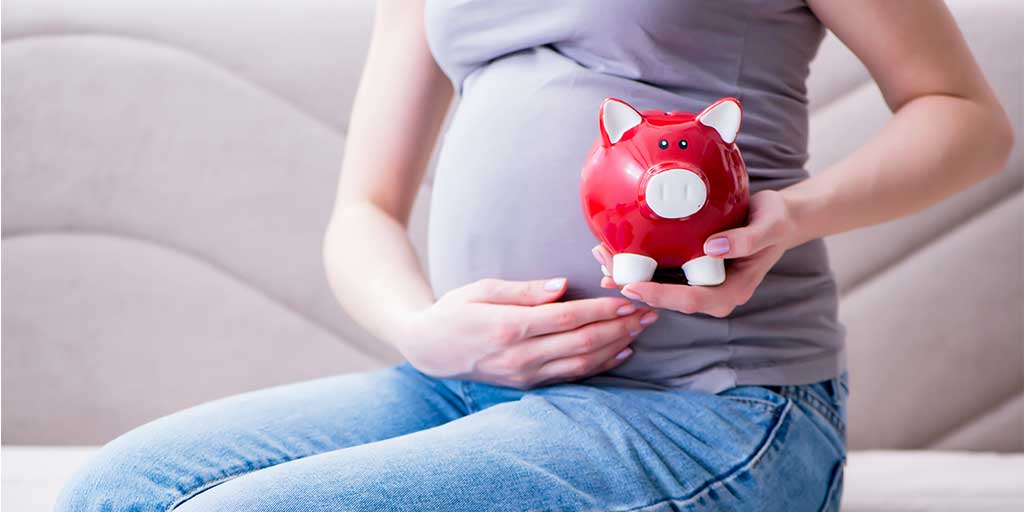
Money Worries
The idea of financial planning does not normally resonate with being pregnant or a new mum – especially in those early days. I can’t imagine that anyone has time for anything beyond keeping your tiny human alive and keeping the big humans functioning well enough (on very little sleep) to not be a liability.
However, for many new parents, or those expecting, financial stresses can contribute to a feeling of overwhelm and I would like to try and highlight a few areas of planning which might help break down the impossible wall of “finances” into smaller, reasonable chunks that you might want to consider for your own circumstances.
Understanding cash flow
The first is in reviewing your cash flow. Basically this means that ‘money in’ needs to be more than ‘money out’, or stress happens. We need the money to last longer than the month does or week 4 of each month becomes a breeding ground for stress, discontent and even discord between people. This can be particularly amplified when there is also a disparity in earnings. The first place to start is a very honest budget.
Once you have a budget in place, you can use cash flow tools to review the impact of maternity leave on the longer term family finances. This is something to consider before maternity leave but also for anyone with a degree of flexibility over their return to work date within your maternity leave. Below I have set out the real cash difference for someone taking six months maternity leave versus one year maternity leave.
What if you want to spend more time at home?
In this scenario, I assume that “Mum” has an employed role with a £30,000 salary. Her company offers full pay for the first 13 weeks and 50 percent pay for the following 13 weeks.
If she were to continue to a full year’s maternity leave, she will receive statutory maternity pay of £151.20 for a further 13 weeks (based on 2020/2021 rates) and no pay for the final 13 weeks.

In this example, Mum would receive £23,188 over the twelve month period if she took six months maternity leave.
A full year’s maternity leave would see earnings drop to £11,903 for the year.
Mum would need savings of £12,095 to make up this difference. For many parents, this extra time at home is worth raiding the family coffers for, but do look to create a plan so as not to hit any unexpected surprises in your maternity leave when you should be enjoying the time with your new arrival.
Consistency is key with savings
Remember is that cash is not always king – if saving over a long time, consistency is key, along with compound income. Einstein is reputed to have called compound interest “the 8th wonder of the world. He who understands it, earns it; he who doesn’t, pays it.” Whether he actually did make this quote is less important than understanding the power compounding interest does have.
Essentially, compound interest is the idea that you are earning interest, then you earn interest upon interest which means your savings grow exponentially. Cash is not currently paying interest so compounding can’t happen in this low rate world. For long term savings, make sure that you are using this 8th wonder and seeking investments that pay an interest rate that beats inflation – whether that be via a fixed rate cash bond, government bonds, the stock market or other interest bearing savings. The effect of this compound interest is shown in the chart below, comparing the returns on £10,000 savings over 20 years using savings earning 0.1% vs savings earning 1.5% vs savings in stocks and shares earning 4%. The future value of investments can fall as well as rise and future growth is not guaranteed.

Extra financial protection
The arrival of a child is a great time to consider what life and income cover you have in place – income protection cover enables your family to replace an income if one of you is not able to work for a period of time due to ill health. This means that your essential outgoings and lifestyle costs are covered and you can focus on recovery without the added money worries. Cover is available to homemakers, the self-employed as well as employed people. Often this can be included in employment contracts as permanent health insurance but is available as a stand-alone contract for those of us not covered by our employer or in self-employed roles.
The pension pot
My next tip is to review your pensions and keep an eye on the longer term. Again, it is hard to look further than next week sometimes, but by keeping an eye on what we want from our long term future, including helping your now tiny child onto the property ladder or through university/internships/first jobs, it helps keep those goals in place. Look at pensions across the family unit and make sure that the primary caregiver still has pension contributions, it keeps an even keel for the future and stops anyone feeling left behind by the child raising years. The Insuring Women’s Futures’ Manifesto, carried out by Jane Portas for the CII, has found that “the average pension pot of a 65 year old woman is £35,800 (excluding the State Pension), just one fifth of a man of the same age, and the median private pension wealth of a man aged 45-54 is over three times that of a woman of the same age.”* It is essential to keep up with pension contributions for both parents wherever possible to avoid such disparity creeping in.

Saving for your kids
Don’t overlook Junior ISAs – these can be set up from birth and contributions can be made by proud grandparents, aunties, uncles, godparents and so on. With a saving limit now increased to £9,000 per annum (for tax year 2020/2021), a JISA offers some serious savings potential to set up your child for first car/house deposit/university/gap years and so on. You do not have to commit to a regular amount and so this could be the place for people to make birthday and Christmas present contributions. As soon as your child is born you can set up a Junior ISA on their behalf. It’s similar to an adult ISA but allows you to save up to £9,000 per year for your child tax free. Like adult ISAs you can either choose a cash or a stocks and shares version or one of each. And just with adult ISAs, you can switch between providers to take advantage of better savings rates or lower investment charges. Money can’t be taken out of Junior ISAs until your child reaches their 18th birthday but when they do it becomes their cash and they can do with it what they please.
My last tip is probably the most important – it’s good to talk! When you face financial worries, it is easy to feel like you are on your own. In truth there are plenty of people out there sharing your feelings and just as many people ready to help you make sense of the overwhelming information and work with you to set up a practical, manageable financial plan. An independent financial adviser is a great place to start but you need to find the right person for you, I offer a free introductory meeting to make sure that my clients and I are compatible before either or us commit to working together. Other sources of support are:
If you have questions about any of the topics raised in this piece, please feel free to contact me for a confidential, free, friendly chat – I am always ready to listen and help in any way I can.
Grovely Financial Limited is an appointed representative of Vision Independent Financial Planning Ltd which is authorised and regulated by the Financial Conduct Authority. Firm reference number 487395.
*A full copy of the Manifesto can be found here https://www.insuringwomensfutures.co.uk/wp-content/uploads/2020/01/Manifesto-full-report-Pt1-pt2-2902-WEB.pdf I recommend a read of this to remind us all what we can be doing to avoid the gender wealth disparity, not just at maternity stage but throughout our lives.
For more information on independant financial advice, visit Grovely Financial.
